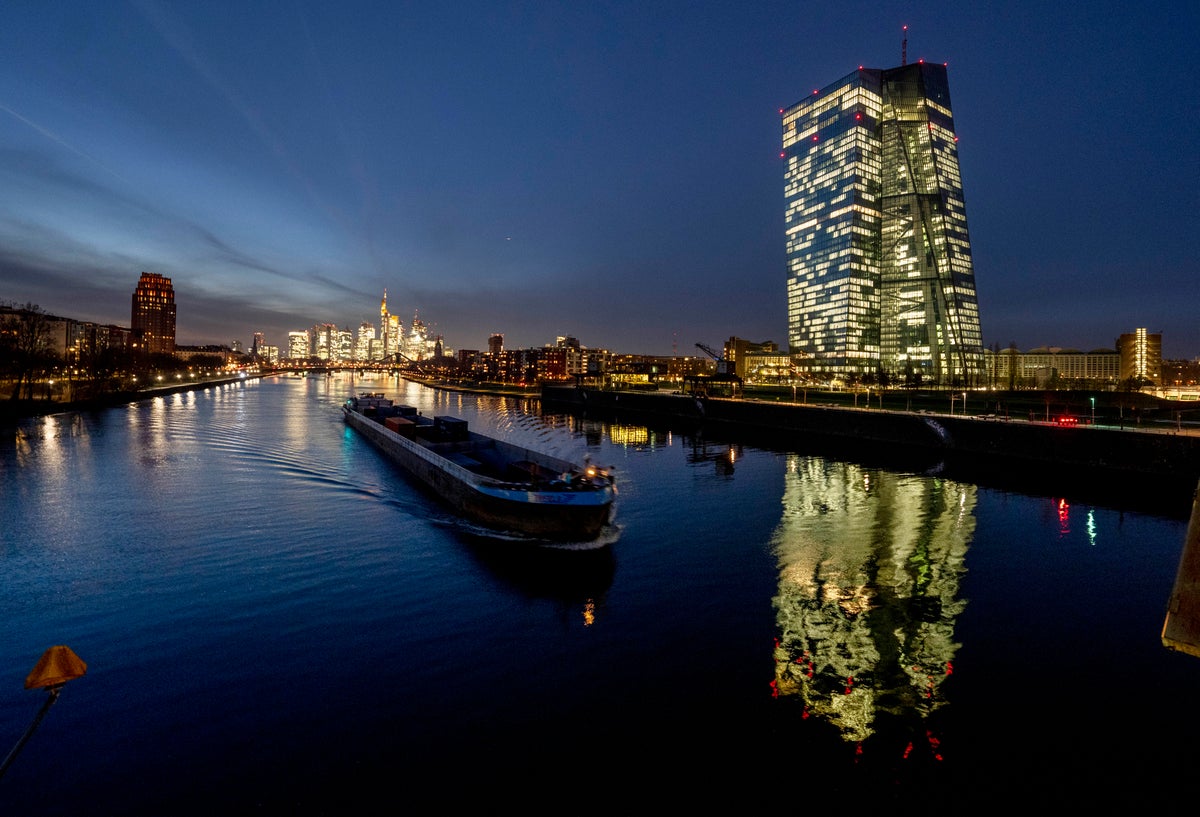
The European Central Bank is expected to slow the fast and furious pace of its interest rate increases aimed at fighting inflation — but not by much as high energy prices driven by Russia's invasion of Ukraine ravage consumer finances and threaten a recession in Europe.
Analysts foresee a still-sizable rate hike of a half-percentage point at Thursday's meeting in Frankfurt, Germany, following record increases of three-quarters of a point in July and October. That would echo the U.S. Federal Reserve, which made a half-point increase Wednesday, following four straight hikes of three-quarters of a point.
The Swiss central bank also raised by a half-point Thursday, when a similar hike is expected from the Bank of England. Inflation has eased in the United Kingdom, U.S. and Europe but is still painful as food, energy and housing costs squeeze households.
The ECB will consider how inflation in the 19 countries that use the euro currency unexpectedly fell to 10% last month from 10.6% in October. It was the first drop since June 2021 but still far above the ECB's goal of 2%.
Despite the decrease, it's “too early” to say inflation has peaked, the ECB's chief economist, Philip Lane, said in an interview with the Milano Finanza newspaper.
"I would be reasonably confident in saying that we are close to a peak in inflation,” he said, but cautioned that the journey back to 2% “will take time.”
Bank President Christine Lagarde is expected to stick to a strong anti-inflation message during a news conference after the decision, with a three-quarter-point rate increase not absolutely ruled out. Analysts say rate hikes are likely to continue into next year, and Lagarde's remarks will be watched for hints on how high rates might go.
Analysts at Pictet Wealth Management said the prospects for inflation remaining above target for some time mean that Lagarde “at a minimum ... should lean against the idea of a pause any time soon.”
One reason for sticking to the tough anti-inflation message: the growth outlook for the European economy has improved, to mere shallow recession from possible disaster.
Despite energy prices surging after Russia cut off most natural gas shipments, the European Union succeeded in largely filling underground storage for the winter heating season. That has eased concern about running low on gas, which is used for heating, industry and power generation, and reduced fears of rolling electricity blackouts and industrial shutoffs.
Interest rate increases are central banks' chief tool to fight inflation. Higher benchmarks are soon reflected in higher market borrowing costs for consumers looking for mortgages and businesses needing credit to operate or invest in new facilities. More costly credit reduces demand for goods, and, in theory, also reduces price increases.
The flip side is that higher rates can slow economic growth, and that has become a concern in the U.S. and Europe. The slightly improved, or at least less disastrous, outlook for growth in the eurozone is seen as a green light for Lagarde and the ECB to keep their focus firmly on inflation.
Bank officials say getting tough now prevents inflation from becoming chronic and requiring even more painful medicine.
The ECB's benchmark rate for lending to banks stands at 2%, and its rate on deposits left overnight by commercial banks is 1.5%.
Between the July and October meetings, the bank raised both benchmarks by 2 percentage points in just three months, the fastest pace since the founding of the shared euro currency in 1999 and covering ground that took 18 months in early rate-raising cycles.







